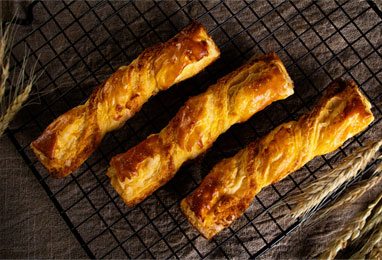Fermentation process: Erythritol characteristics and fermentation process
1. Overview
Erythritol is white crystal, slightly sweet, with a relative sweetness of 0.65 , a cooling sensation, and low caloric value, about one-tenth of the caloric value of sucrose. Due to low solubility, it is easy to crystallize. Used in organic synthesis and biochemical research. Made from wheat, corn and other starch, safe and appropriate food-grade hypertonic yeast such as Monilielaplinis , Candida lipolvtica or Tricho sporonoides meachilensis at high concentrations >450gL ) after enzymatic fermentation, the fermentation liquid is heated, sterilized and filtered, then purified by ion exchange resin, activated carbon and ultrafiltration, crystallized, washed and dried. The general yield is about 50%. Erythritol is widely distributed in nature and is found in seaweed, mushrooms, melons, grapes and other fruits. Since some microorganisms such as fungi, bacteria, and yeast can also produce erythritol, erythritol is also found in fermented foods, such as fruit wine, wine, beer, rice wine, etc. There are two main production methods for erythritol: chemical synthesis and fermentation. This article is mainly about erythritol microorganisms.
2. Erythritol has relatively good moisturizing properties
Erythritol has good crystallinity, low hygroscopicity, and is easy to crush to produce powdered products. It does not absorb moisture in an environment with a relative humidity of 90%. It is more difficult to absorb moisture than sucrose. When using powder, the operation process is the same as that of granulated sugar.
3. Comparison of acid and heat stability of erythritol
The melting point of erythritol is 126°C, the boiling point is 329~331°C, and it is very stable against acid and heat. Under normal food processing conditions, there will be almost no browning or decomposition, and it can endure the high-temperature cooking steps in hard candy production without browning. The results of the heating coloring test are shown in the figure below.
4.Comparison of dissolution heat of erythritol
The heat of dissolution of erythritol in water is 3 times that of glucose and 1.8 times that of sorbitol. Even if it is mixed with sugar, the dissolution heat absorption is large, so it can make foods with a refreshing feeling.
Sugar can promote the combination of alcohol and water, and has the effect of easing the irritation of alcohol; during the melting process, the degree of binding is measured using differential scanning thermal analysis. The measurement results show that the degree of solubility can indicate the degree of binding. Therefore, compared with other sugars, even a small amount of erythritol can promote the combination of water and alcohol. 6. Fermentation production of erythritol. Since there are many microorganisms in nature that can metabolize and produce erythritol, it can be produced and prepared using biotechnology. Using wheat or corn starch as raw material, it is enzymatically degraded to generate glucose, which is then fermented by high-osmotic yeast to produce red sugar alcohol and a small amount of ribitol, glycerol and other by-products. The typical yield is close to 50%. Highly osmotic yeast can ferment and metabolize under low moisture conditions, which can increase the yield per unit volume and also reduce pollution and losses during the fermentation process. Finally, high-purity erythritol is crystallized from the clarified concentrated fermentation broth.
After natural separation, multiple compound mutagenesis treatments, domestication and other means, the strain has a high sugar tolerance of more than 50% . Using starch hydrolyzed sugar as raw material, the erythritol yield reaches more than 180g/L and the conversion rate reaches 50% . The above has currently completed the pilot and production experiments of erythritol fermentation technology and extraction technology. The product purity reaches more than 99% , and all physical and chemical health indicators meet export requirements.
Preliminary research results show that the erythritol-producing bacteria obtained through breeding have stable performance, extensive fermentation conditions, easy control, fast fermentation speed, low fermentation residual sugar, and few fermentation by-products. It is an excellent erythritol-producing bacteria. The entire production process technology route determined by the research is simple and easy to implement, and it is easy to realize industrial production. The technical conditions for large-scale industrial production of erythritol are now available.
Quality standards for erythritol
Exterior: White crystalline powder
Taste: Sweet, sweet and stimulating similar to sucrose
odor :odorless
Content: ≥98%
Loss on drying: ≤0.2%
pH value (30% aqueous solution ): 5 ~ 7
Heavy metals ( calculated as Pb ): ≤5mg/kg
Arsenic: ≤2mg/kg
Ash content: ≤0.01%
E. Coli: Negative
5. Applications of Erythritol
Erythritol is a filling sweetener with a refreshing taste. It has pure sweetness and a sweet stimulation close to sucrose. It can be mixed with powerful sweeteners to improve the sweetness quality. Because of its low solubility and easy crystallization, it is especially suitable for foods that require extremely fine sucrose crystal grains, such as chocolate. Other applications include tabletop sweeteners, confectionery, preserves, beverages and dairy products. The following table shows the maximum value of energy reduction that can be achieved by various foods using erythritol while ensuring product quality.
5.1 Application of erythritol in food industry
As a new functional food sweetener that has just started in the world, erythritol has the characteristics of low hygroscopicity, low caloric value, good crystallinity, non-dentitogenicity, and is suitable for diabetics as well as unique physiological and metabolic characteristics. , has a wide range of uses in the food industry. Due to the good heat and acid stability of erythritol, it will hardly cause browning or decomposition under general food processing conditions, and it will not cause browning when boiling at high temperatures during hard candy production. This has a great impact on the quality of chocolate. The high thermal stability of erythritol allows refining to be carried out at higher temperatures, which can further promote the formation of chocolate flavor and improve the quality of the product. Erythritol has poor hygroscopicity. Under high humidity conditions, it is not easy to absorb moisture even in an environment with a humidity of more than 90% . This feature is particularly important in food processing such as chocolate chewing gum. Experiments show that when 10g of red sugar alcohol is dissolved in 90g of water, the temperature can drop by 4.8C . When 17g of erythritol is dissolved in 100 ml of water at 22 °C, the cooling effect is about 6 °C. The high heat absorption of fresh sugar alcohol makes the product have a lasting refreshing and cooling feeling after consumption, which is useful for improving the properties of chewing gum, refreshing solid drinks and candies. Quality is very important. Erythritol has a refreshing sweetness, and when combined with high-intensity sweeteners such as protein sugar and stevia, it can effectively mask the bitter taste of these sweeteners ; erythritol can also reduce the odor of alcohol and improve The taste and flavor of distilled liquor and wine can be used in vegetable juice drinks to effectively suppress the unique bad taste of vegetable drinks; when added when drinking coffee, it can effectively suppress the astringent taste of coffee. Erythritol's heat-resistant and acidic properties, as well as sterilization processes such as pasteurization, high temperature or ultra-high temperature, will not affect the appearance and quality of beverages using erythritol as a sweetener.
5.2. Application of erythritol in the production of medicines and health care products
Erythritol has very low calories and is known as a " zero " caloric value sweetener. Therefore, it can be used to produce various low-calorie health foods, weight loss foods and beverages. Due to the special physiological metabolism mechanism of erythritol, it does not affect blood sugar. The characteristics of the level can be used to develop functional foods or beverages for patients with glucose discomfort such as diabetes. The anti-caries properties of erythritol cannot be utilized by pathogenic bacteria such as Streptococcus mutans. Therefore, candies and special tooth cleaning products made of erythritol have a positive effect on protecting children's oral health. In the pharmaceutical industry, erythritol can be used as a flavoring agent for medicines and an excipient for tablets, which can effectively improve the taste of medicines. Recent studies have also shown that erythritol derivative - dodeerythritol has anti -HIV activity. Nitroerythritol generated after the nitration of erythritol can be used to treat cardiovascular and cerebrovascular diseases and asthma patients.
-
Inulin
-
Polydextrose
-
Resistant Dextrin
- Trehalose
- Resistant Dextrin(Soluble Corn Fiber)
- Resistant Dextrin(Soluble Corn Fiber)(Powder)
- Resistant Dextrin(Soluble Tapioca Fiber)(Powder)
- Resistant Dextrin(Soluble Tapioca Fiber)(Liquid)
- Resistant Maltodextrin Powder
- Resistant Maltodextrin Powder (Liquid)
- Organic Resistant Dextrin Powder (Corn Type) 70%
- Organic Resistant Dextrin Powder (Corn Type) 90%
- Organic Resistant Dextrin Powder (Tapioca Type) 70%
- Organic Resistant Dextrin Powder (Tapioca Type) 90%
- Organic Resistant Dextrin Syrup (Corn Type) 70%
- Organic Resistant Dextrin Syrup (Corn Type) 90%
- Organic Resistant Dextrin Syrup (Tapioca Type) 70%
- Organic Resistant Dextrin Syrup (Tapioca Type) 90%
- Organic Resistant Maltodextrin Powder (Corn Type) 70%
- Organic Resistant Maltodextrin Powder (Tapioca Type) 70%
- Organic Resistant Maltodextrin Syrup (Corn Type) 70%
- Organic Resistant Maltodextrin Syrup (Tapioca Type) 70%
- Organic Soluble Corn Fiber Powder 70%
- Organic Soluble Corn Fiber Powder 90%
- Organic Soluble Corn Fiber Syrup 70%
- Organic Soluble Corn Fiber Syrup 90%
- Organic Soluble Tapioca Fiber Powder 70%
- Organic Soluble Tapioca Fiber Powder 90%
- Organic Soluble Tapioca Fiber Syrup 70%
- Organic Soluble Tapioca Fiber Syrup 90%
- Resistant Dextrin Powder (Corn Type) 70%
- Resistant Dextrin Powder (Corn Type) 90%
- Resistant Dextrin Powder (Tapioca Type) 70%
- Resistant Dextrin Powder (Tapioca Type) 90%
- Resistant Dextrin Syrup (Corn Type) 70%
- Resistant Dextrin Syrup (Corn Type) 90%
- Resistant Dextrin Syrup (Tapioca Type) 70%
- Resistant Dextrin Syrup (Tapioca Type) 90%
- Resistant Maltodextrin Powder (Corn Type) 90%
- Resistant Maltodextrin Powder (Tapioca Type) 90%
- Resistant Maltodextrin Syrup (Corn Type) 90%
- Resistant Maltodextrin Syrup (Tapioca Type) 90%
- Soluble Corn Fiber Powder 70%
- Soluble Corn Fiber Powder 90%
- Soluble Corn Fiber Syrup 70%
- Soluble Corn Fiber Syrup 90%
- Soluble Tapioca Fiber Powder 70%
- Soluble Tapioca Fiber Powder 90%
- Soluble Tapioca Fiber Syrup 70%
- Soluble Tapioca Fiber Syrup 90%
-
Dioscorea Opposita Dietary Fiber
-
Wheat Dietary Fiber
-
Oat Dietary Fiber
-
Polydextrose Powder (Conventional Type)
-
Polydextrose Powder (Special Type)
-
Polydextrose Powder (Sugar Free Type)
-
Polydextrose Powder (Type II)
-
Polydextrose Powder (Type III)
-
Polydextrose Syrup (Conventional Type)
-
Polydextrose Syrup (Refined Type)
-
Polydextrose Syrup (Special Type)
-
Polydextrose Syrup (Standard Type)
-
Polydextrose Syrup (Sugar Free Type)
- Fructo Oligosaccharide
-
Malt Oligosaccharide
- Isomalto-oligosaccharide 900 Powder
- Isomalto-oligosaccharide 900 Powder(Corn)
- Isomalto-oligosaccharide 900 Powder(Tapioca)
- Isomalto-oligosaccharide 900 Syrup
- Isomalto-oligosaccharide 900 Syrup(Tapioca)
- Isomalto-oligosaccharide 900 Liquid (Corn)
- Isomalto-oligosaccharide 900 Liquid (DP3)
- Isomalto-oligosaccharide 900 Liquid (Tapioca)
- Isomalto-oligosaccharide 900 Powder (Corn)
- Isomalto-oligosaccharide 900 Powder (DP3)
- Isomalto-oligosaccharide 900 Powder (Tapioca)
- Organic Isomalto-oligosaccharide 900 Liquid (Corn)
- Organic Isomalto-oligosaccharide 900 Liquid (DP3)
- Organic Isomalto-oligosaccharide 900 Liquid (Tapioca)
- Organic Isomalto-oligosaccharide 900 Powder (Corn)
- Organic Isomalto-oligosaccharide 900 Powder (DP3)
- Organic Isomalto-oligosaccharide 900 Powder (Tapioca)
- Xylo-oligosaccharide
- Galacto-oligosaccharide
-
Mannan Oligosaccharide
-
Isomaltulose Powder
-
Saigao Stachyose






